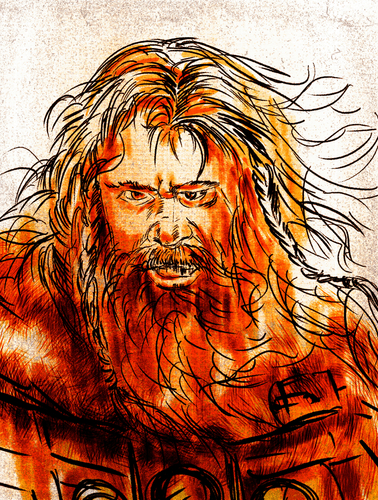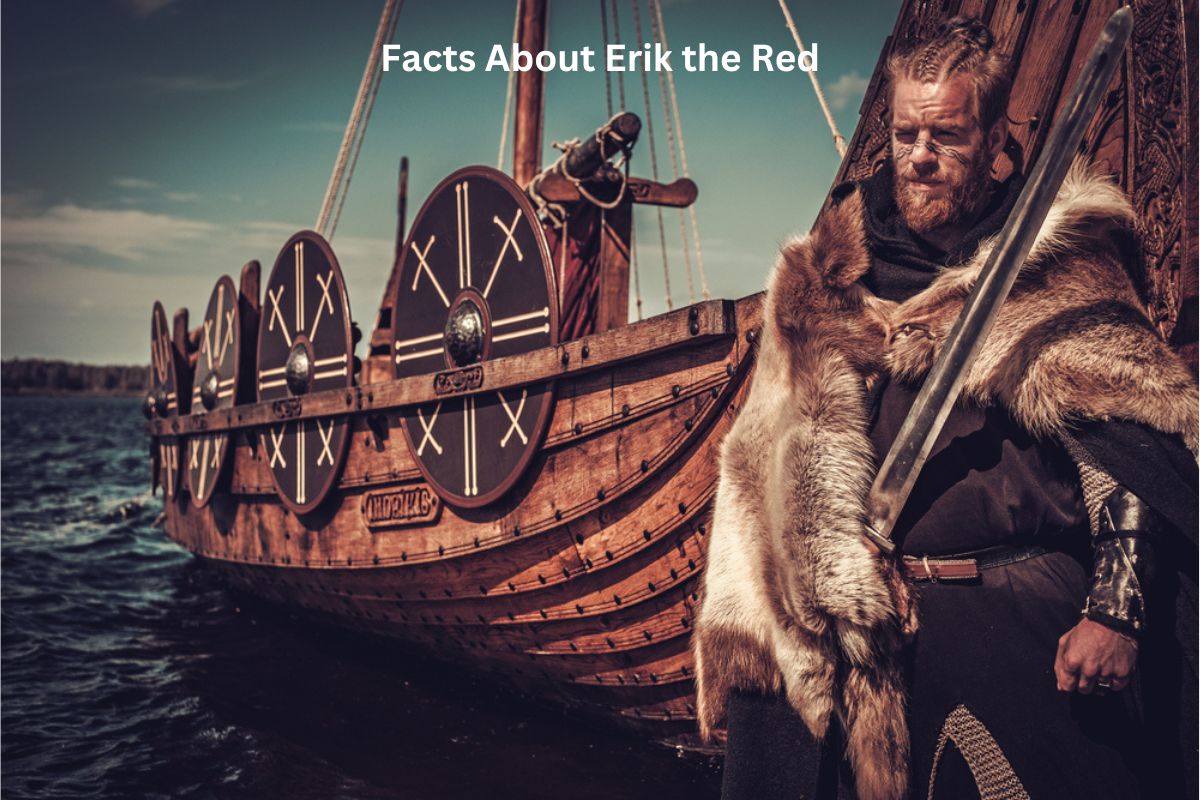Erik the Red, originally named Erik Thorvaldsson, was a notable Norse explorer and settler born in Norway around 950 CE.
He is renowned for his pivotal role in the discovery and colonization of Greenland, as well as for being the father of Leif Erikson, who led the first documented European expedition to North America.
Erik’s life was marked by exile, exploration, the founding of Greenland’s first Norse settlement, and a significant religious conversion later in life.
His legacy is deeply intertwined with the history of Norse exploration and expansion in the North Atlantic region.
Erik the Red Facts
1. Born in Norway around 950 CE
Erik the Red, whose original name was Erik Thorvaldsson, was born in Norway around the year 950 CE. He was part of a family with a history of conflicts and disputes, which would eventually lead to his exile from both Norway and later Iceland.

2. Exiled from Norway due to family conflicts
Erik’s father, Thorvald Asvaldsson, was exiled from Norway for an unknown reason, and the family settled in Iceland.
Also Read: Timeline of the Vikings
In Iceland, Erik’s family continued to be embroiled in disputes and conflicts with their neighbors. These feuds eventually led to Erik’s exile from Iceland for a period of three years.
3. Banished from Iceland for manslaughter
During his time in Iceland, Erik the Red was involved in a violent altercation in which he killed two men. This act of manslaughter resulted in his banishment from Iceland.
Also Read: Facts About Rollo the Viking
To avoid further trouble and escape the consequences of his actions, Erik decided to set sail westward in search of new lands to explore and settle, which eventually led him to discover Greenland.
4. Explored Greenland and named it to attract settlers
During his westward exploration from Iceland, Erik the Red is credited with discovering a large, icy landmass. Despite the harsh conditions and the presence of ice, he chose to name it “Greenland” in an effort to attract settlers.
Erik believed that a more appealing name would encourage Norse people to join him in establishing a settlement. The choice of the name “Greenland” has often been seen as a marketing strategy to make the new land seem more habitable and inviting than it actually was.
5. Founded the first Norse settlement in Greenland in 985 CE
After returning to Iceland and serving his exile period, Erik the Red convinced others to join him in settling Greenland. In 985 CE, he established the first Norse settlement in Greenland, known as Brattahlid.
This marked the beginning of sustained Norse presence on the island. Brattahlid was located in the southwestern part of Greenland, near present-day Qassiarsuk.
6. Married Thjodhild and had several children, including Leif Erikson
Erik the Red married a woman named Thjodhild, and they had several children together. One of their most famous sons was Leif Erikson, who would later become known as “Leif the Lucky.”
Leif Erikson is celebrated for leading the first documented European expedition to North America, around the year 1000 CE, long before Christopher Columbus’s voyage to the New World.
7. Converted to Christianity later in life
Although Erik the Red was initially a follower of Norse paganism, he eventually converted to Christianity. The exact details of his conversion are not well-documented, but it is known that his wife, Thjodhild, played a significant role in this process.
Thjodhild had embraced Christianity, and her influence likely played a part in Erik’s decision to convert. This conversion marked a significant cultural and religious shift for Erik and his family.
8. Had conflicts with neighboring settlements in Greenland
Life in Greenland was challenging due to the harsh climate and limited resources, and conflicts between different Norse settlements were not uncommon. Erik the Red and his family had several disputes and conflicts with neighboring settlers in Greenland.
These conflicts sometimes turned violent and contributed to the overall difficulties of living in a remote and unforgiving environment.
9. Died in Greenland around 1003 CE
Erik the Red spent the latter part of his life in Greenland, where he continued to be involved in the affairs of the Norse settlements. He died in Greenland around the year 1003 CE.
While the exact circumstances of his death are not well-documented, his passing marked the end of an era and the beginning of a new chapter in the history of the Greenland Norse settlements.
10. Buried in the Brattahlid settlement in Greenland
After his death, Erik the Red was buried in the Brattahlid settlement in Greenland, which he had founded. This settlement, located in the southwestern part of Greenland, served as an important center for Norse culture and trade in the region. Although the Norse settlements in Greenland eventually declined and were abandoned, Brattahlid was a significant site during their heyday.
